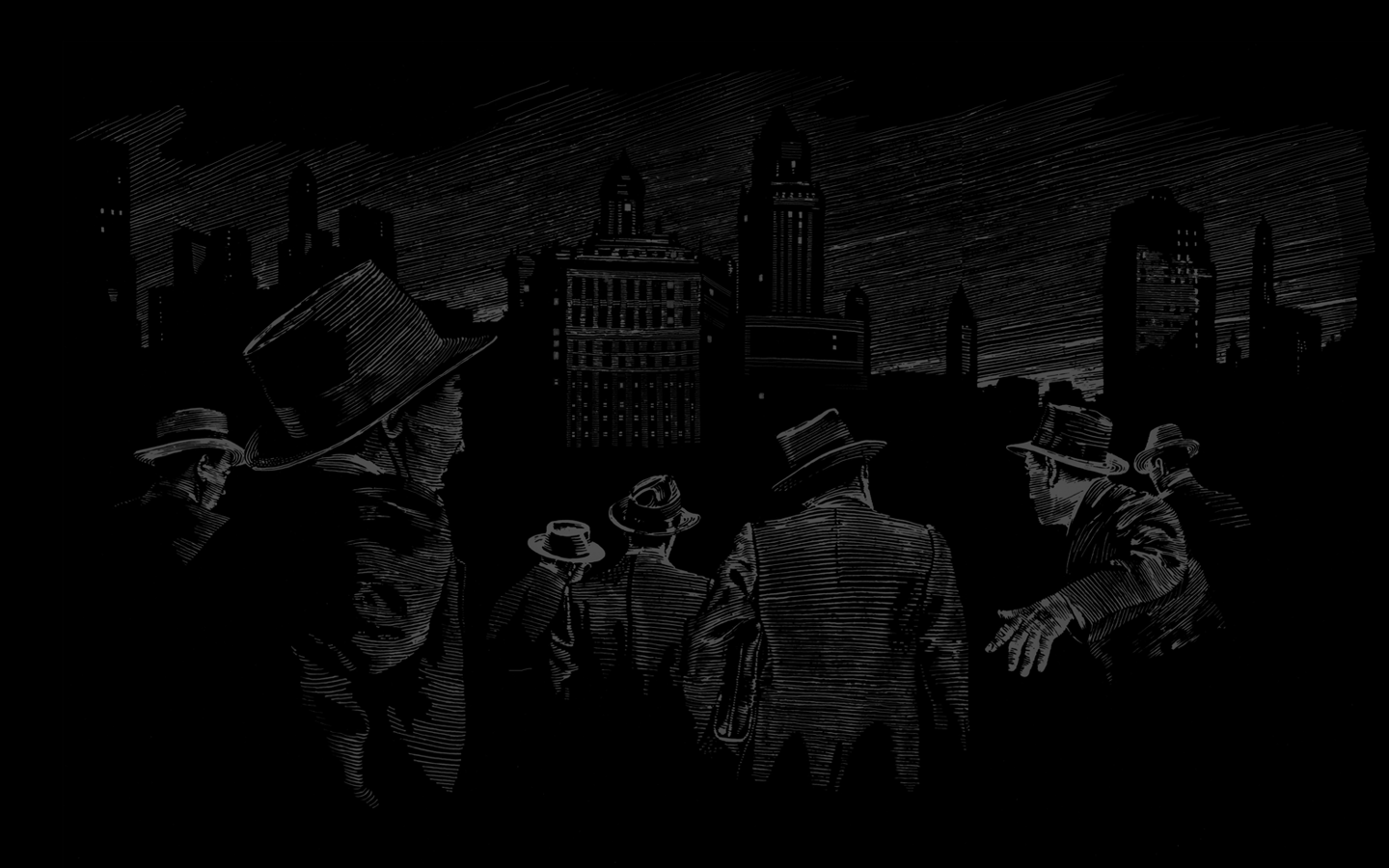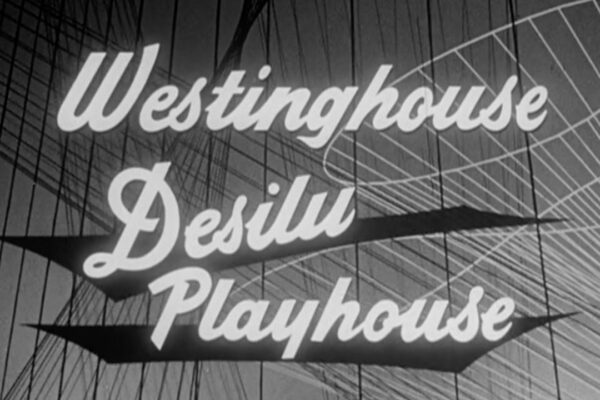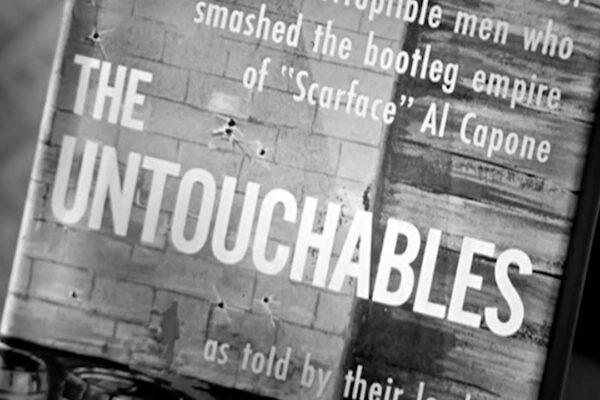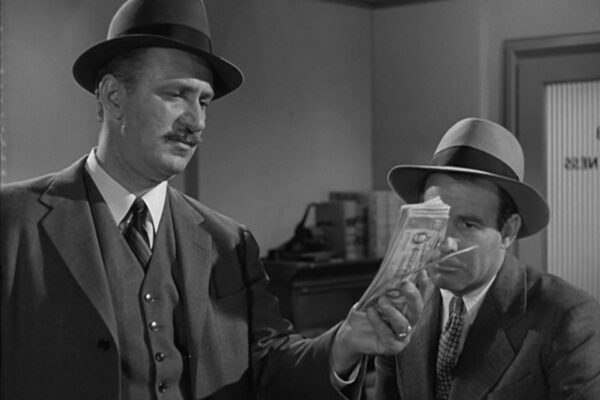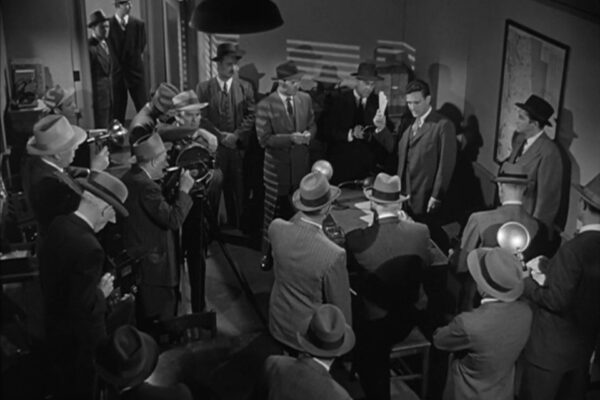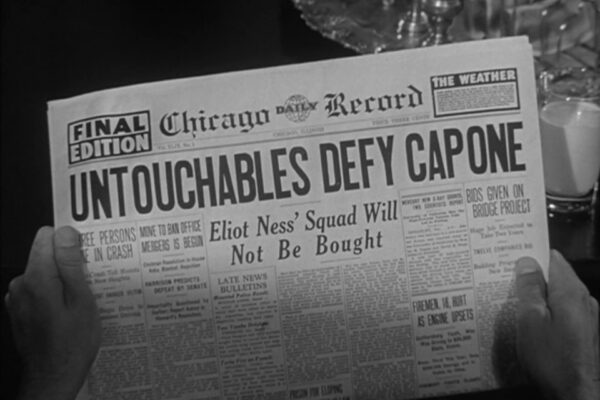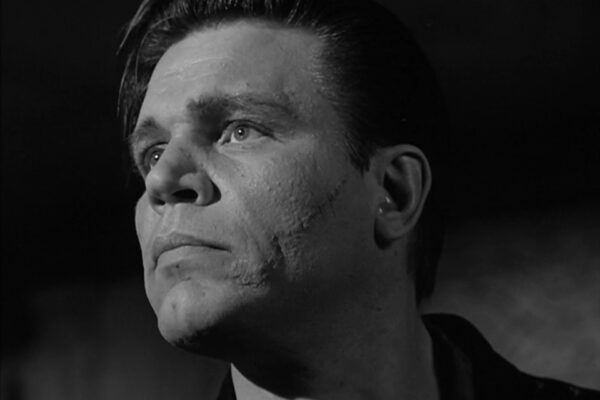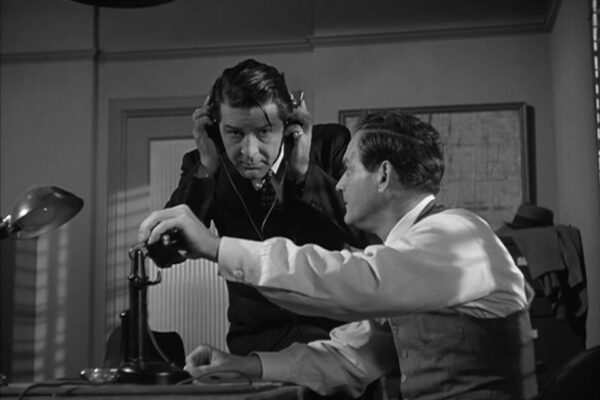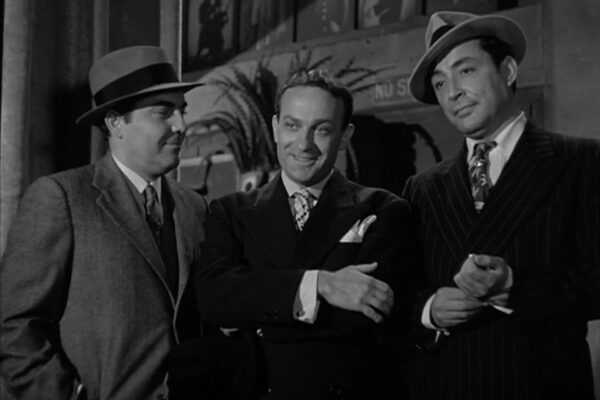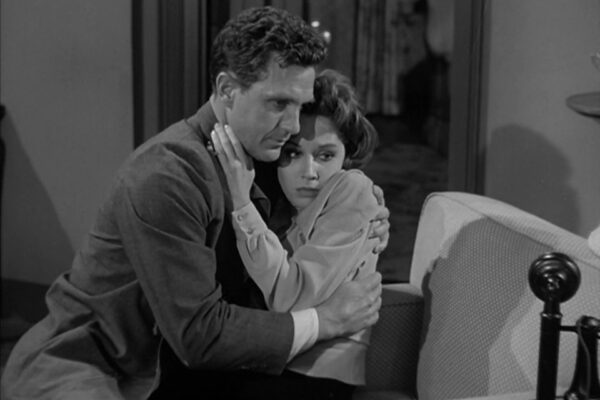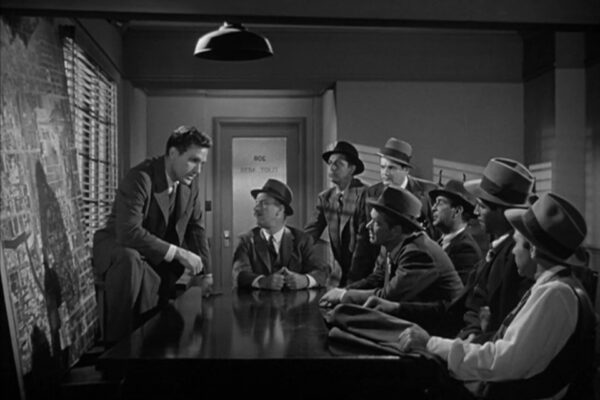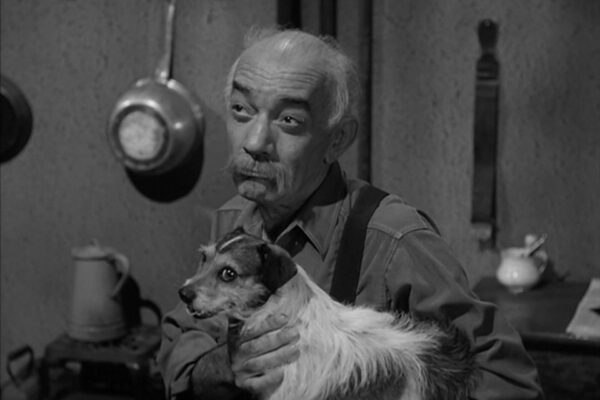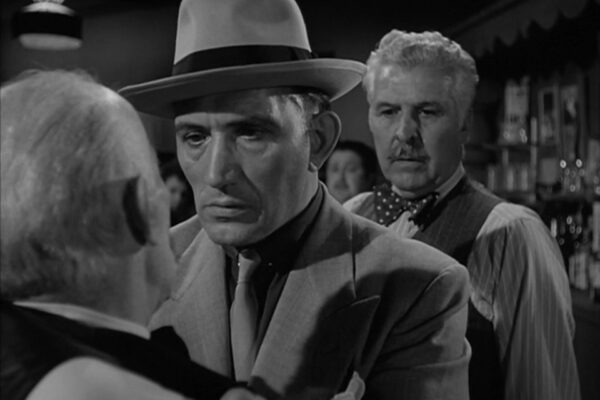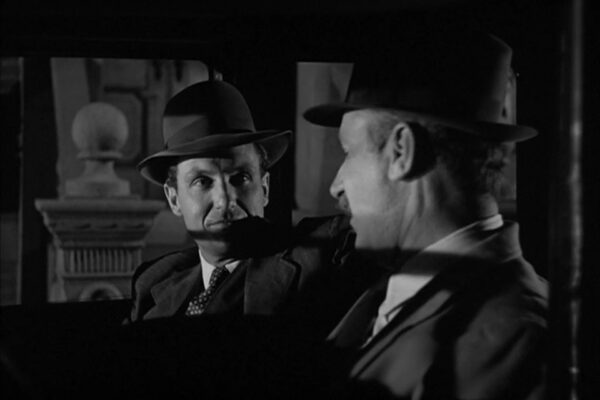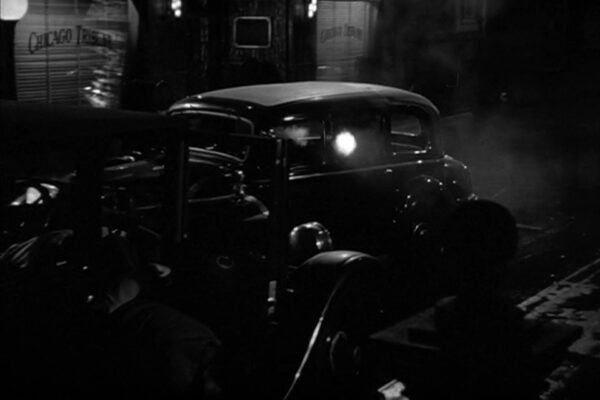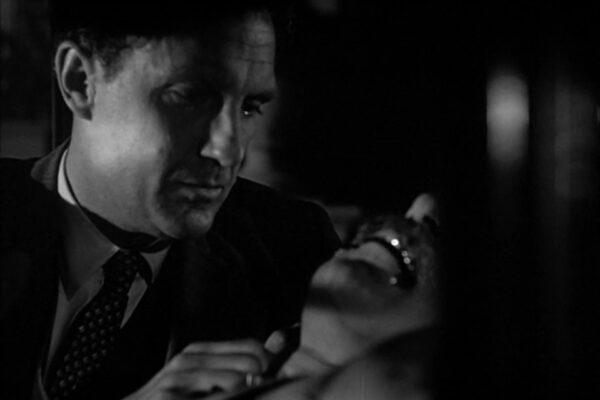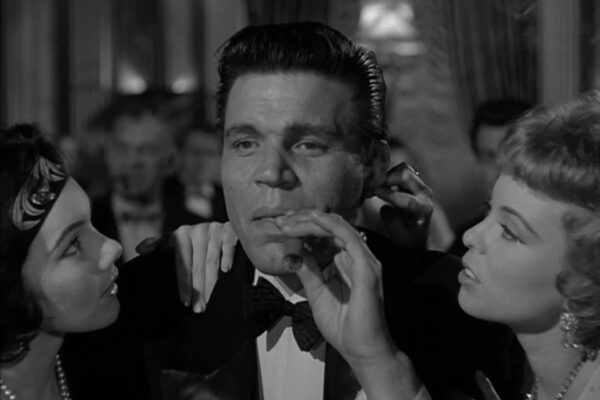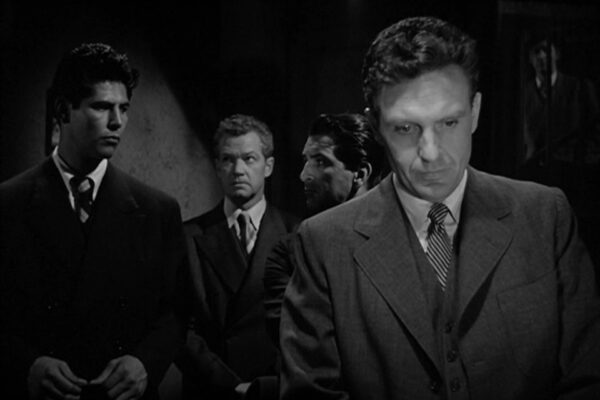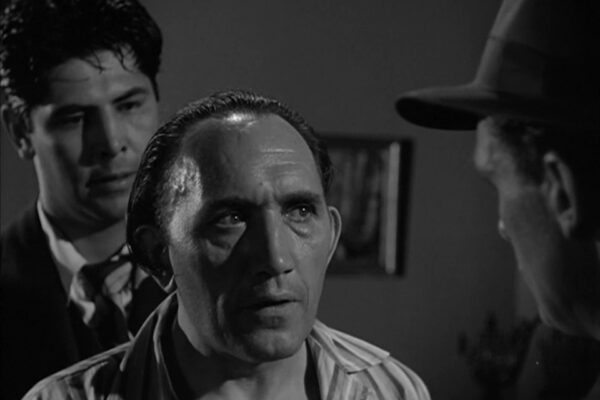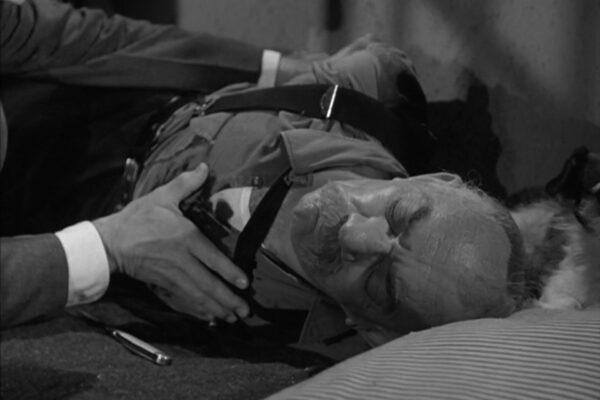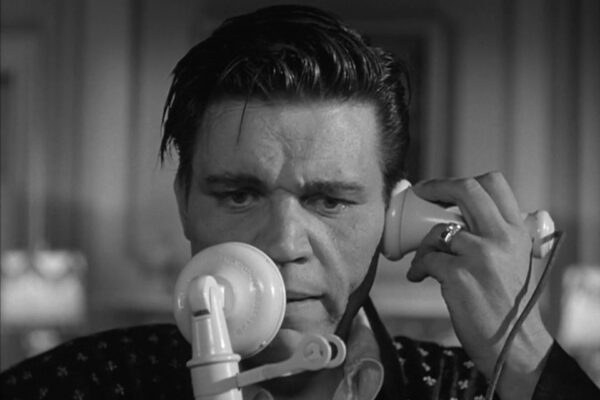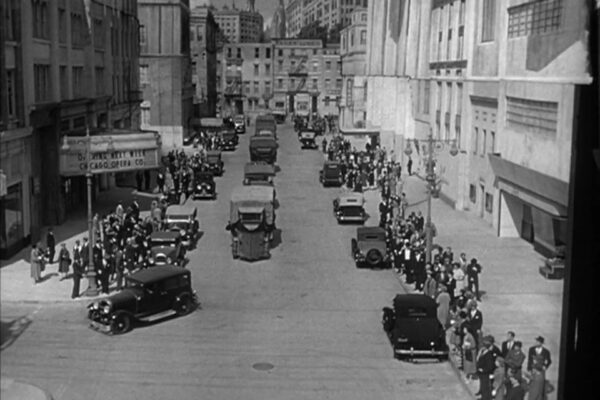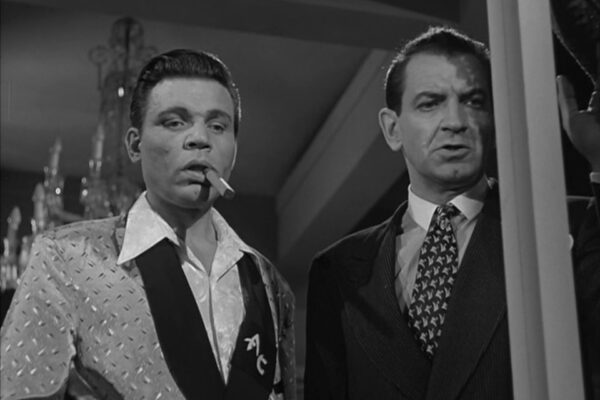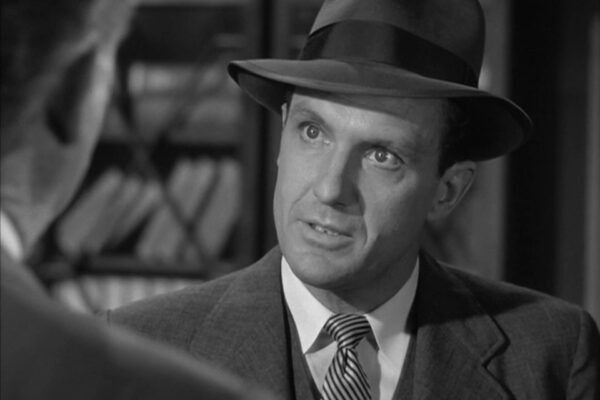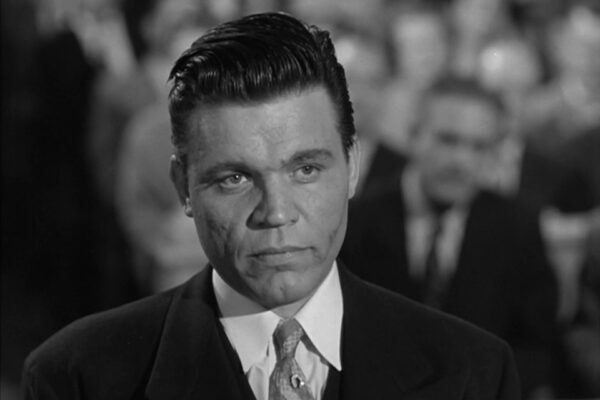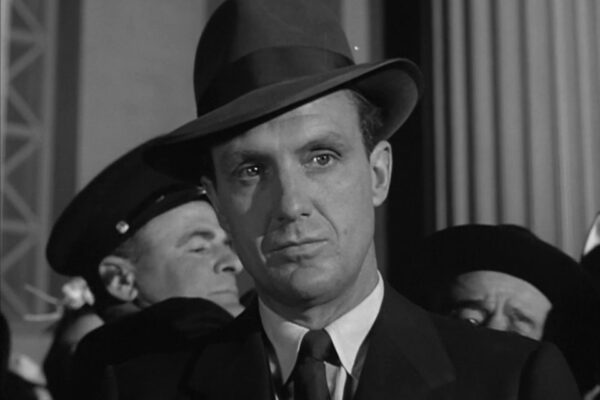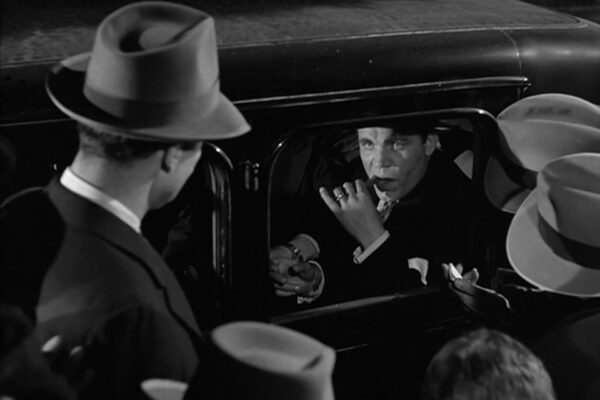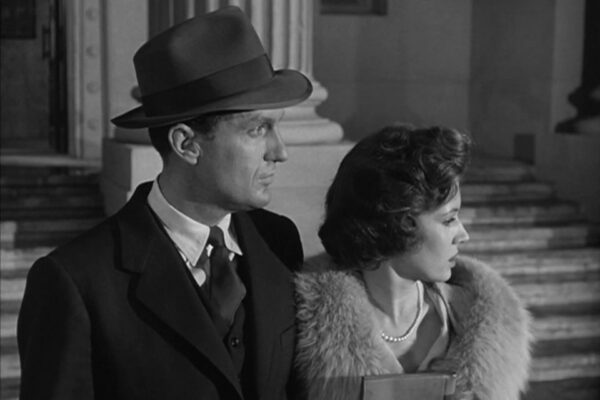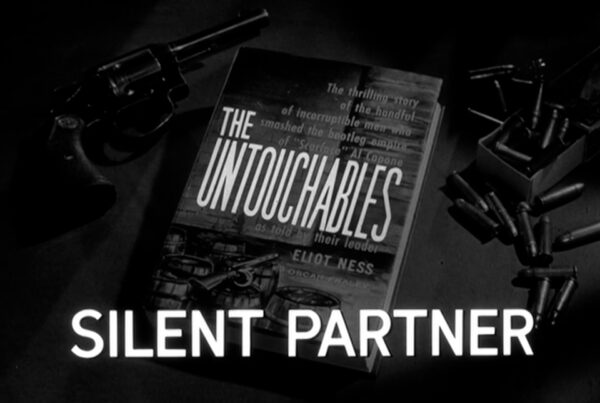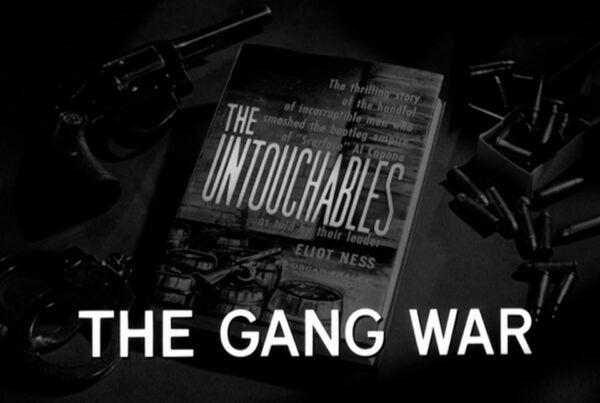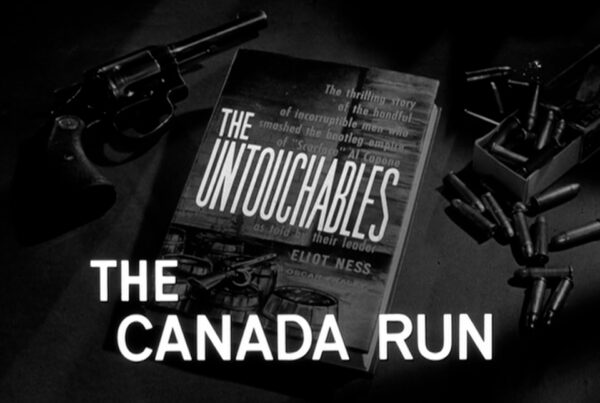THE UNTOUCHABLES (PART 2)
Airdate: April 27th, 1959
Written by Paul Monash
Based on the novel by Eliot Ness and Oscar Fraley
Directed by Phil Karlson
Director of Photography Charles Straumer
Music by Wilbur Hatch
Narrated by Walter Winchell
Produced by Quinn Martin
Executive Producer Bert Granet
Starring Robert Stack, Keenan Wynn, Barbara Nichols, Pat Crowley
Special Guest Star Neville Brand
“While the mob heads met, Eliot Ness and his squad gave Capone their own welcome to Chicago. These men, specially selected from the Prohibition Bureau, were preparing to raid and wreck still another Capone brewery.”
Following the raid, a corrupt alderman visits Ness, proclaiming that Capone is a respectful, philanthropic citizen. He offers Ness $2,000 a week to lay off – but it’s a ruse. When Ness threatens him with a bribery rap, the alderman reveals the envelope is simply filled with blank papers. After tossing him out, Fuselli and Kane arrive with an envelope filled with cash that had been thrown into their car.
Ness calls a press conference in his office, displays the bribery money, and steadfastly proclaims the squad can’t be bought off and won’t be killed off. The following day, the newspaper proclaims “UNTOUCHABLES DEFY CAPONE: Eliot Ness’ Squad Will Not Be Bought.”
One of the first blows struck against the Untouchables is the loss of their wiretap on the Capone headquarters. Sporting a new suit and car, Georgie Ritchie arrives at Ness’ office and is immediately questioned by Ness and his men. Ritchie reveals he’s given Capone the names and addresses of the squad. They immediately press him for the location of a new Capone brewery – one of the mob’s largest – and blackmail him into finding out.
Ritchie begins to arouse suspicion with questions about the new brewery. While watching his wife Brandy’s burlesque act, two Capone hoods arrive and whisk Ritchie away. That same night, Capone’s men break into Betty Anderson’s apartment and threaten her. Traumatized by the visit, Anderson phones Ness. As he hurries from his apartment, a sedan peels by and dumps the body of Ritchie at his doorstep.
Ness tries to console Anderson when a telephone call interrupts. The mobsters threaten to return and “come back and bring some of the boys” and tell Ness they have plans for him too. Determined to protect Anderson, they travel over the state line and get married that same evening, with Fuselli as a witness.
Scouring the city for the Capone brewery, Fuselli questions Pico, an old family friend and waiter at a Scanola’s, a restaurant frequented by Capone’s men. His small dog in hand, Pico swears he doesn’t know.
At Scanola’s, Pico brings drinks to a backroom filled with mobsters, including Frank Nitti, Al Capone and Jimmy Napoli. Napoli is given Il bacio della morte – the kiss of death. Napoli has been charged with carrying out the hit on Eliot Ness.
While dropping Ness off at his home, Fuselli spots a car speeding around the curb. He dives ontop of Ness as their car is violently assaulted by a sub-machine gunfire. Anderson runs from outside the building to find a tearful Ness cradling Fuselli’s body.
A remorseful Pico is questioned by Ness and reveals that Capone and his men were seen in the same room as Napoli a night earlier. Pico admits the last thing he told Fuselli was a lie – he does know the location of the brewery. Ness gathers up Pico and his dog and sequesters them away in a city jail.
Ness raids Napoli’s hotel room and arrests him. Capone forestalls the homicide charge and declares his innocence. When Ness arrives back at the jail for Pico, he finds him dead of a stab wound. Dejected, Ness takes Pico’s dog and leaves the jail cell in silence.
Resolved to use Pico’s tip, Ness assembles his men and a handful of other treasury agents to raid Capone’s largest brewery. As the Untouchables breach through the doors, the brewery erupts in gunfire. Gangsters and several of the additional agents are gunned down, but the raid is victorious. Ness pulls up the office phone and calls Capone’s room at the Lexington Hotel to deliver the news: the big brewery is smashed – and he should look out his window the next morning to see what he has for Capone. Ness says he’s going to make sure Capone never forgets the name of Joe Fuselli.
The next morning, Capone and his men await Ness’ surprise from the Lexington Hotel. At 11’o clock, the Untouchables appear in the street below, parading by with Fuselli’s funeral procession – and a host of confiscated beer trucks. With Capone’s influence dwindling, US Treasury agents are successful in preparing an income tax evasion case against him, but there’s a catch: Capone will plead guilty for a reduced sentence of two years. Ness is beside himself in anger.
At the trial, Judge James Wilkerson tosses the recommendation for leniency and Capone responds by withdrawing his guilty plea. Through the course of the three-month trial, the government is successful: Capone will pay a fine – and serve a term of 11 years in the penitentiary.
Victorious, the Untouchables watch as Capone is escorted to prison. As they exchange handshakes, Ness is joined by his wife, and they walk off together.
“Ness was occupied with the thought of the long years of struggle ahead to destroy the remnants of the Capone organization. And so, Al Capone disappeared from view, to be replaced by other racketeers, more subtle, even more destructive. Against this new breed of racketeers, who are managing to steal, extort, divert and pervert almost ten percent of the income of the people of the United States, Eliot Ness fought until his death in 1957. Al Capone is dead. Eliot Ness is dead. But the struggle between the Capones and the Nesses, witnessed by a public that remains dangerously indifferent, goes on and on.”
REVIEW
 A week earlier, the first installment of The Untouchables was the second most-watched program on television, and audiences eagerly returned to see the conclusion. In her recap, television reviewer Eve Starr wrote, “The show was by all odds the best thing Desilu Playhouse turned out all season and one of the best things turned out by anybody. It was in every respect a superior show.”
A week earlier, the first installment of The Untouchables was the second most-watched program on television, and audiences eagerly returned to see the conclusion. In her recap, television reviewer Eve Starr wrote, “The show was by all odds the best thing Desilu Playhouse turned out all season and one of the best things turned out by anybody. It was in every respect a superior show.”
You can learn how Desilu arrived at the decision to produce The Untouchabes in this episode of our podcast and in Chapter 1: Desiluland.
Capone’s return to Chicago gives this hour’s narrative a new momentum, as Ness’s battle thus far has been rewarded with success. The violent death of Joe Fusseli is the first time on television that squibs – small controlled explosive devices used to simulate the impact of gunfire – were used on television.
According to film history, squibs were first employed in 1955 by Polish filmmaker Andrzej Wajda in Pokolenie (A Generation), the first of what would become Wajda’s war trilogy and were singularly driven by his time in the Polish resistance in World War II. His familiarity with the brutality of the Nazis and the Soviets features prominently in these films, which makes his use of squibs a reflection of his desire to show the brutality of war. This also makes the use of this new kind of special effect all the more potent for audiences in 1959. Due to Keenan Wynn and Robert Stack’s chemistry and Karlson’s directing, Fusseli’s death is compellingly felt.

The first use of a squib in feature films, as seen in “Pokolenie.”

The first use of squibs on television as seen in “The Untouchables” Part 2.
With Capone’s presence looming, the hour is also more action-packed. Given it was the film’s most elaborate and expensive set piece, the brewery raid was the first to be filmed for The Untouchables. When the raiding truck bursts into a beer vat, the debris struck a cameraman and broke his ribs. The gunfight is hastily filmed but sets the stage for the large expenditure of gunpowder that will become a staple of the series, as well as the flashpoint for many controversies.
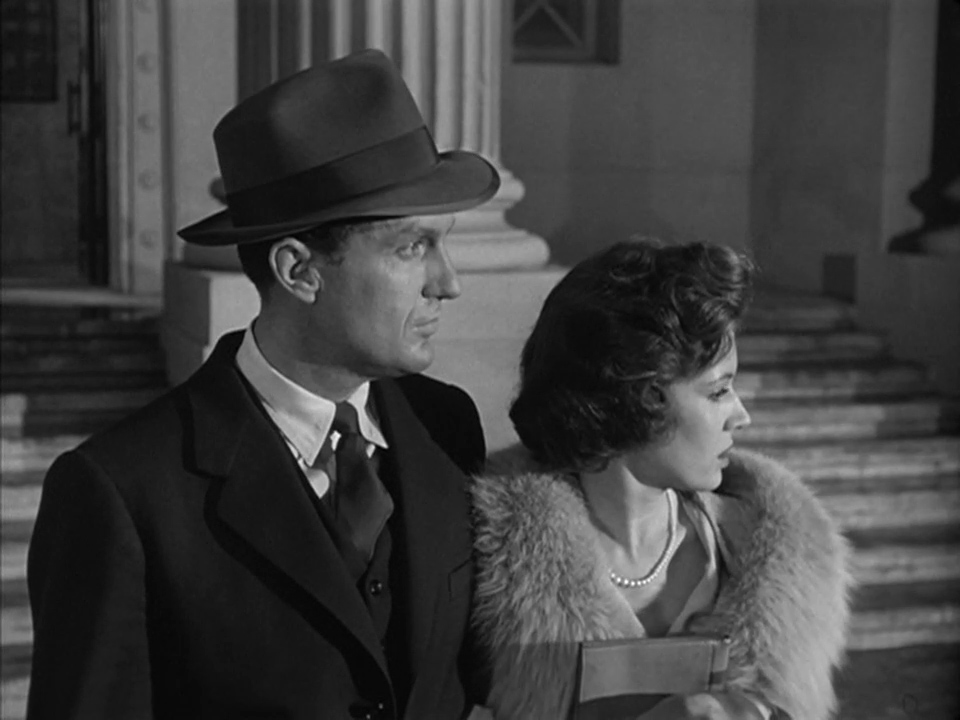
Eliot Ness looks to the future – unaware of the four years of television that await him.
Winchell’s closing narration is a well-composed prologue for the television series which does much to prime the audience of the “long years of struggle ahead to destroy the remnants of the Capone organization.” Winchell’s narration also revisits Part 1’s statement that, to a degree, the public’s indifference to crime is the reason why the battle between the good guys and bad guys is never-ending. Ness even tells the Alderman that “scum” like him makes it all possible by selling the mob his office.
This limited, but poignant social commentary, will be referenced in later episodes of the series and amounts to the only “message” Quinn Martin permits the show to highlight.
“We want people to care,” stated Martin in an interview later that summer. “Ness proved that people who care, even one person who cares, can do plenty. The danger of the ’20s is a potential danger of the ’50s or ’60s or anytime…
“We all want to keep the series exciting and entertaining, but in telling each story it is hoped that a few lessons and preachment mighty quietly creep in without being too obvious.”
Stack agreed with this motivation, saying “that is really the flaw in most private-eye shows. The audience doesn’t really care about the hero. We want the audience on our side, all the way, and that’s the way we’re going to do it.”
As Martin recounts, the morning after Part 2 concluded, a sponsor called demanding the show be made into a series – and that Robert Stack had to stay on to play Eliot Ness.
“They wouldn’t take no for an answer.”
OBSERVATIONS
• Brandy LaFrance’s strip tease is far more suggestive in the theatrical cut, but even edited for broadcast, it was still “right saucy” for the time as one reviewer put it. Quinn Martin had hired a professional stripped to consult actress Barbara Nichols, and after seeing the result of the instruction hired a choreographer to tone down the act.
• The kiss of death is the first of its kind on television – that is, a male-on-male kiss.
• This marks the first and last time we’ll ever see Eliot Ness cry and marks the last time we’ll see Betty Anderson, though Ness’ wife will merit the occasional mention on the television show.
• The majority of Parts 1 and 2 were filmed at Desilu Gower and the daytime street scene and courthouse exterior were filmed on MGM’s backlot. MGM’s New York Street set is visually extended by a matte painting, created by artist Luis McManus, and features a stylized viewscape from Chicago’s Michigan Boluevard, featuring the Wrigley Building, The London Guarantee Building and Mather Tower on Wacker Drive. These buildings will later feature prominently in the billboard and promotional artwork for the series. Hat tip to Matte Shot for identifying the artist.
HISTORICAL NOTES
• The defiant parade of beer trucks in view of Capone and the Lexington Hotel actually happened, though its use as a funeral procession for one of Ness’ men is fictional.
• Following the Capone case, Eliot Ness was promoted within the Prohibition Bureau as Chief Investigator. After Prohibition, Ness would be transferred to Kentucky and later Cleveland. In 1935, Ness would become Cleveland, Ohio’s Public Safety Director, modernized the police force and would later encounter the “Mad Butcher” of Kingsbury Run, one of the first documented serial killers in American history. While the “Torso Murders,” as they were called, would never be solved, Ness would leave a lasting impact on Cleveland’s law enforcement. His book on which The Untouchables was based, was published posthumously 1957. Desi Arnaz would come across a summary in 1958 and later acquire the rights for the Desilu Playhouse.


